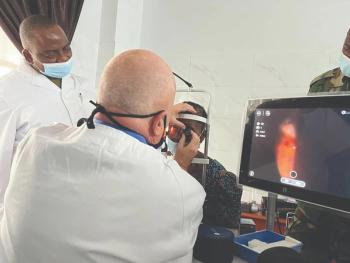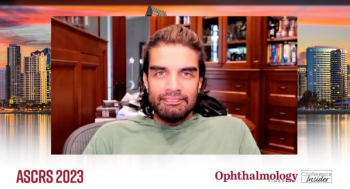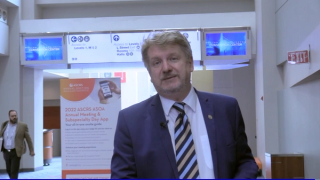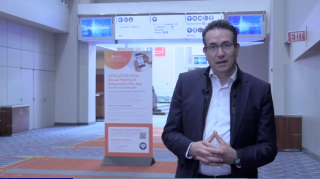
Interventional Glaucoma
Latest News
Latest Videos

CME Content
More News

Cigna’s Coverage Policy includes procedures enabled with OMNI® Surgical System technology as medically necessary and covered.

The study results could help lead to improved understanding of glaucoma and new therapies.

SBI-100 is a cannabinoid receptor type 1 (CB1R) agonist administered topically onto the eye to reduce IOP and treat glaucoma.

Elaine Ye Wang, MD, discusses the MicroPulse TLT and the benefits the procedure because it does not require patients to alter their lifestyle.

Elaine Ye Wang, MD, discusses adapting transscleral laser therapy (TLT) using MicroPulse technology into her practice and the benefits of using the technique.

The ophthalmic solution from VivaVision is being studied for the treatment of glaucoma.

The event is a forum for the exchange of ideas between leading scientists in diverse fields to bring their knowledge to the challenges of glaucoma and help set the course for future glaucoma research.

Therapeutic has fewer adverse effects in patients with POAG, OHT.

The project, a collaboration with researchers from the University of Maryland, holds promise for advancing new and more tolerable drug treatments for common chronic blinding eye diseases, including glaucoma and macular degeneration.

SLT shows promise as treatment for millions of Africans with glaucoma.

Louis R. Pasquale, MD, FARVO, will be presented the award by previous winner Robert N. Weinreb, MD.

According to the company, study results show sustained reductions in both IOP and glaucoma medication use in mild-moderate primary open angle glaucoma patients treated with a procedure enabled with the OMNI Surgical System technology.

Debate continues over the best way to apply the treatment option.

According to the company, a PDUFA date has been set for December 22, 2023.

The study, titled “A Clinical Registry Study of Glaucoma Medication Use in Patients with Mild Glaucoma Severity After MIGS,” will be presented Sunday by Michael Mbagwu, MD, at the American Society of Cataract and Refractive Surgery annual meeting in San Diego, California.

Ophthalmology Times® spoke with Mitch Shultz, MD at ASCRS 2023 in San Diego where he shared insights from his presentation comparing patient results of the Hydrus stent and the iStent inject W with or without ABiC (or ab-interno canaloplasty).

Ophthalmology Times© spoke with Richard Lewis, CMO of ViaLase at the 2023 ASCRS meeting in San Diego. There he gave out team the details of his presentation for the 2 year follow up of the first in-human study of Femtosecond Laser Image Guided High-Precision Trabeculotomy (FLigHT).

Ike Ahmed, MD, sat down with David Hutton, Managing Editor, Ophthalmology Times®, to discuss his presentation on the study of standalone multiple trabecular micro-bypass stents for uncontrolled glaucoma at the ASCRS annual meeting in San Diego

Gerd Auffarth, MD, PhD, and the chairman at the Heidelberg University Eye Clinic discussed the 7 year, long-term data for the iStent inject second generation with our team at the 2023 ASCRS meeting in San Diego.

Austin Fox, MD, discussed advancements in contact lens technology and use as part of a careful management strategy during Glaucoma Subspecialty Day at the American Society of Cataract and Refractive Surgery annual conference in San Diego.

Jason Bacharach, MD, presented results at the American Society of Cataract and Refractive Surgery annual meeting in San Diego, highlighting that a large phase 3 clinical trial demonstrated no relevant differences between the 2 formulations.

Eric Mikula, PhD, from ViaLase sat down with David Hutton, Managing Editor, Ophthalmology Times®, to discuss the company's femtosecond laser image-guided high-precision trabeculectomy, FLigHT, for non-incisional glaucoma treatment at this year's ARVO meeting.

Ophthalmology Times® talked Nevin El-Nimri, MS, OD, PhD, FAAO, about the relationship between optic disc fovea distance, axial length and disc at this year's ARVO meeting.

Glaucoma specialists nationwide reported that glaucoma-related adverse events were common after cataract surgery in children.

Ophthalmology Times® talked with Ronald Zambrano, lab supervisor for the advanced Ophthalmic Imaging Lab at NYU Langone about lamina cribrosa pressure and predicting structural glaucoma progression at this year's ARVO meeting.






























































.png)


